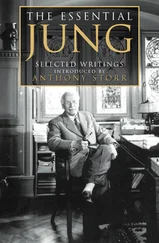Constructing or adopting a belief system in which one is either God’s prophet or God himself inflates the ego to monstrous proportions. Koresh was more deeply concerned with religion, Jim Jones with racial equality and an egalitarian society. But both compensated for isolation and lack of love in childhood by becoming infatuated with power, and both ended up with delusions of their own divinity.
It seems almost incredible that either of these gurus could have retained the allegiance of their followers for so long. Koresh made some ineffective attempts to conceal the identity of the children whom he took to bed, but most of the outrageous sexual behaviour and the appalling cruelty of each guru were paraded rather than concealed. There were very few defectors from either camp. It appears that once a guru has convinced a follower of his Messianic status, his actual behaviour, as judged by ordinary human standards, becomes largely irrelevant. Belief in a guru, while it persists, entirely overrules rational judgement. Dedicated disciples are as impervious to reason as are infatuated lovers.
There is a well-known psychiatric phenomenon called folie à deux . If two people live together and one is mad, the other may become convinced by at least some of the delusions expressed by the psychotic partner. If the psychotic partner is removed to hospital, the other partner usually recovers his or her sanity. Shared delusions are mutually reinforcing, and membership of a sect led by a psychotic leader reassures both the leader and the disciple who has fallen under his spell of the truth of their beliefs. Both Jim Jones and David Koresh kept their followers under close surveillance and made it difficult for anyone to leave. Fortunately, this is exceptional. Contrary to popular belief, most of those who join ‘New Religious Movements’ are not subject to coercion, and many leave such movements without difficulty. But communities like Jonestown which are isolated from normal sources of information become more dependent on whatever information is given them by their leaders, and are less able to question what they are told. Research into so-called ‘sensory deprivation’ has shown that individuals who are cut off from most varieties of sensory input by being placed in sound-proof, light-proof rooms become more suggestible, and tend to be less critical of any information which is fed to them. The same is true of isolated communities. In addition, anyone within the community who dares to doubt the pronouncements of the guru is likely to be treated as a traitor by his fellows. Jones and Koresh, to all except their disciples, appear to have been evil madmen. They exhibited, in exaggerated form, with very few redeeming features, all the worst possible characteristics of gurus. Fortunately, the majority of gurus are not as bad as they were. We need to examine some other varieties.
II GEORGEI IVANOVITCH GURDJIEFF
GURDJIEFF CLAIMS OUR INTEREST because he, or his doctrines as propounded by his disciple Ouspensky, bewitched so many interesting and intelligent people, including the writer Katherine Mansfield, A. R. Orage, the distinguished socialist editor of The New Age , Margaret Anderson, the editor of the Little Review , and her friend and co-editor Jane Heap; the surgeon and sexologist Kenneth Walker; Olgivanna, the third wife of Frank Lloyd Wright; John Godolphin Bennett, later to become something of a guru himself. The psychiatrists James Young and Maurice Nicoll, and the psychoanalyst David Eder were also followers. T. S. Eliot, David Garnett and Herbert Read intermittently attended Ouspensky’s meetings. Ouspensky, who first encountered Gurdjieffin 1915, became chiefly based in London and was therefore more accessible to interested English people than the guru himself.
The date of Gurdjieff’s birth is uncertain. Some say 1866; others quote one of his several passports, which showed December 28, 1877. James Moore, 1Gurdjieff’s latest biographer and the author of Gurdjieff and Katherine Mansfield , argues that the earlier date is the more probable. Gurdjieff was secretive about this as he was about so many features of his background. He died on October 29, 1949. His birthplace was Alexandropol (formerly Gumru) in Russian Armenia, in the land lying between the Black Sea on the West and the Caspian Sea on the East, south of the Caucasus mountains. His father was Greek, his mother Armenian. Armenian was spoken at home, but he also learned some Greek, some Turkish, and the local dialects. In his autobiographical memoir, Meetings with Remarkable Men , he claimed to know eighteen languages, but there is no evidence to support this. Throughout his life, he continued to speak both Russian and English incorrectly.
Gurdjieff was the eldest of six children; he had a brother and four sisters. One of the sisters died young. In Gurdjieff’s early childhood, the family moved to the near-by city of Kars, shortly after the defeat of the Turkish forces there in 1878 by the Grand Duke Michael Niklayevich, brother of the Russian Tsar. The boy Gurdjieff was accepted as a chorister at Kars military cathedral, and being obviously intelligent, attracted the notice of Father Dean Borsh, who helped to educate him. He developed a passion for learning, read widely in Greek, Armenian, and Russian, and began to harbour a wish to find some answer to the problem of ‘the meaning of life’. He resembles other gurus in going through a period of doubt which was succeeded by the revelation which manifested itself in his new cosmogony and his teaching. Why his perplexity was so extreme as to propel him into a search for truth which lasted twenty years is not apparent.
Gurdjieff’s esoteric knowledge and status as a guru were attributed to his discoveries during his travels in Central Asia, but we are entirely dependent upon his own inaccurate account. The period 1887–1911 remains unsubstantiated and mysterious. Gurdjieff claimed to have learned much from a three months’ stay in ‘the chief Sarmoung monastery’, belonging to a brotherhood which he said taught him secret wisdom derived from traditions dating back to 2500 B.C., including physical techniques for self-transformation, and sacred dances. Gurdjieff was careful never to be specific about the exact location of these teachers of secret knowledge, although he later stated that he had a teacher from whom he was never separated, and with whom he constantly communicated, presumably telepathically. The Sarmoung monastery cannot be identified, and even disciples of Gurdjieff regard his account of it as an allegory rather than literal truth. His own autobiographical account, in Meetings with Remarkable Men , is contradictory and chronologically unreliable. What does emerge from that book is his resourcefulness and his capacity to survive, both physically and financially. He sold carpets and antiques; repaired sewing-machines; bought quantities of old-fashioned corsets and remodelled them to suit current taste; traded in oil and fish, and claimed that he cured drug addicts by hypnosis. His prowess as a healer was, he wrote, unprecedented (Gurdjieff never exhibited false modesty). When asked by Ouspensky about his studies and discoveries, he said that he travelled with a group of specialists in various subjects who eventually pooled their knowledge; but he did not vouchsafe their names or say where they were, nor did he answer direct questions about where he had been. ‘About schools and where he had found the knowledge he undoubtedly possessed he spoke very little and always superficially.’ 2It is hardly surprising that there were rumours that he was a secret agent employed by the Russians.
Gurdjieff established himself as a guru in Moscow in 1912. His principal contention was that man does not know himself, and is therefore not what he should be. He considered that modern civilization had made it difficult to co-ordinate the physical, emotional, and intellectual aspects of personality, which he believed were controlled by three separate centres. He thought that the majority of people were ‘asleep’, and behaved like machines reacting blindly to external forces. His training was designed to awaken selected followers to a higher level of consciousness and a new perception of reality.
Читать дальше











